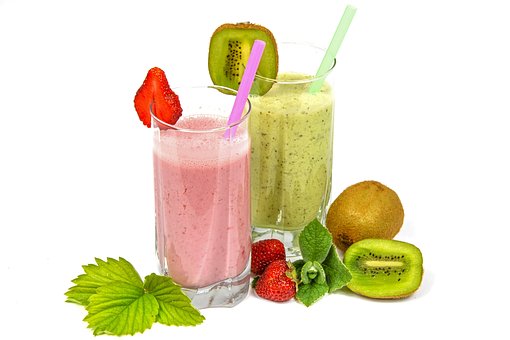If you’re feeling like you’re not being able to maintain your health and wellness lately, you’re not alone. The stress and uncertainty of this time can make anyone feel exhausted. You can improve your energy level by making healthier food choices.
Although fresh ingredients cost more than processed ones, they are worth the extra money. Hopefully you already know that fresh ingredients are good for you, but in case you didn’t know, fresh ingredients are worth the extra money because they are healthier for you.
They contain micronutrients which are essential for our bodies in order to build strong bones, support healing, bolster our immune system, and process food and drink into energy.
Some vitamins and minerals are more easily broken down by heat or other chemical reactions. Water-soluble vitamins are sensitive to being lost during high-heat processes like cooking or boiling.
Having enough of these vitamins is important for maintaining energy levels, repairing cells, and healing wounds.
If you’re worried about losing out on vital compounds in your cooked food, drinking beverages can help.
Some delicious drinks that can help you stay on track are 100% fruit and vegetable juices, cold-pressed juices, smoothies, agua frescas, coconut water, coffee, tea, kombucha, and more. Just be sure not to overindulge in the added sugars.
We’ve put together some healthy homemade drinks for you to enjoy.
1. DIY Cold Pressed Juices
The best way to juice at home is with a dedicated juicer machine. However, to get the most nutrients out of your juice, you may want to invest in a masticating machine instead of a centrifugal machine.
Masticating juicers extract juice more slowly and at a lower temperature than other juicers, which means that more nutrients are retained. This machine is easy to use: just add your produce and collect the juice. One step for a refreshing beverage.
Don’t worry if you only have a blender or centrifugal juicer at home. Keep in mind that the blender will produce some heat as it purees your vegetables. Cutting produce into smaller pieces and adding cool water can help reduce the heat generated and make it easier to get nutrients out of the juice.
There’s also likely to be a lot of pulp which, although it is an excellent source of fiber, may not be palatable for everyone. IF you want to, you can use a fine mesh strainer to remove some of the pulp. It’s up to you how much you want to remove.
No matter which way you choose to get your juice, you will be able to try different flavor and ingredient combos, each with their own set of health benefits.
How about a mix of apple, pineapple, kale and lemon to give you a taste of the tropics and make you feel like you’re on vacation? To get a taste of summertime, mix together beets, strawberries and blueberries.
Purium offers a complete juice bar in a bag. These are already powdered for easy juice making and contain 50 organic vegetables, fruits and herbs!
2. Blend Together a Good Smoothie
Smoothies are easy too. Drinking fruit and vegetable juices can help you get the nutrients you need while also helping you stay cool. You can make your own smoothie by blending frozen produce or homemade juice and ice.
You can also add yogurt to your dish to make it more flavorful, creamy, and to add helpful probiotics. If you want to give your meal a nutrition boost, add a handful of chia or flax seeds. These seeds are also a good source of essential fiber.
We recommend a mixture of classic strawberry-banana or green kale, avocado, and cucumber.
3. Whip an Agua Fresca
To make a deliciously refreshing agua fresca, simply combine 1 part chopped fruit or vegetables with 2 parts water and blend until smooth. Ending it; you’ll only require a bit of lime juice and any sweetener you like.
Aguas frescas provide a delicious way to consume more hydrating liquids – just be careful not to consume too much sugar. There are always options available for those who want to consume fewer calories, like stevia, or watermelon, which provides sweetness without all the extra sugar.
There are many recipes for aguas frescas, but we suggest trying cucumber-mint, watermelon and agave nectar, or cantaloupe with honey.
4. Brew your own Kombucha
Kombucha has been claimed by researchers to have a range of benefits for health such as:
- Supporting mental health
- Promoting gut health
- Weight loss
- Lowering risk of infection
- Lowering risk of heart disease
Even though it takes a while to brew, you can find most of the ingredients and supplies you need at home. Once you complete your first batch of kombucha, you can easily make more.
The best part about kombucha is that you can get creative and experiment with new flavors.
5. Create a Homemade Soda
Many people enjoy soda because it is sweet and has a carbonated flavor. Would you be interested in learning how to make your own soda at home using all-natural ingredients that are just as delicious?
Now you can enjoy a caffeine-free soda without worrying about your kids drinking it too! This recipe provides step-by-step instructions for making four different types of sodas that are both healthy and delicious, thanks to their key ingredients of fruit and honey.
You can make a soda with a honey syrup base and then add any combination of fruit flavors that you want, including strawberry, orange, lemon-lime, grape, and blackberry. This is correct, you can become a skilled soda maker by using four ingredients and investing thirty minutes.
6. Dalgona Coffee
This coffee became famous on Tik Tok at the start of the COVID-19 quarantine. When we were unable to get our usual coffee from Starbucks or Dunkin’ due to the pandemic, Dalgona coffee saved us. Thank you.
Since the pandemic started, people have been using Instagram to show off their barista skills by making fancy drinks that have gone viral.
The best part about this coffee is that it is not difficult to make. Instead of requiring espresso and an expensive machine, it calls for instant coffee – you know, the kind you can get at a low-cost store.
To make the coffee whipped cream, mix together 2 tablespoons each of instant coffee, water, and sugar until it is thick and creamy with stiff peaks. This part of the recipe might take longer if you do not have a hand mixer.
Get a glass of milk and add the whipped coffee mixture on top. Then mix the ingredients together. You will end up with a rich, flavorful, and high-quality cup of coffee – just like you would get from Starbucks.
7. Green Tea
Green tea’s caffeine content is much lower than coffee’s. This text contains information about two compounds that have cognitive benefits.
Some studies suggest that l-theanine may promote relaxation. Other studies suggest that l-theanine combined with caffeine may improve attention. Green tea may help improve focus, attention, and memory, according to a review of 21 human studies.
EGCG can cross the blood-brain barrier to reach the brain, where it may provide benefits or protect against neurological conditions. Nonetheless, more research is necessary.
8. Orange Juice
One cup of orange juice contains 93% of the daily recommended value of vitamin C. Interestingly, this vitamin may offer neuroprotective benefits.
One review of 50 human studies found that those with higher blood levels of vitamin C or a higher self-reported vitamin C intake performed better on tests of attention, memory, and language than those with lower blood or intake levels.
The disadvantages of sugary orange juice may be greater than its benefits. The calorie content in juice is much higher than that of the whole fruit, and a high intake of added sugar is linked to conditions like obesity, type 2 diabetes, and heart disease.
You can get Vitamin C by eating an orange. The whole fruit is a better choice than orange juice because it is lower in calories and sugar, as well as higher in fiber. It still provides 77% of the DV for vitamin C.
9. Green Juices and Smoothies
Green juice combines green fruits and veggies, such as:
- dark leafy greens like kale or spinach
- cucumber
- green apples
- fresh herbs, such as lemongrass
Other ingredients that may be added to green smoothies for creaminess and extra nutrients include avocado, yogurt, and protein powder. Bananas may also be added.
While the brain-boosting potential of green juices or smoothies largely depends on the ingredients, these drinks often contain high levels of vitamin C and other helpful antioxidants.
10. Turmeric Lattes
Turmeric lattes are warm, creamy drinks that feature the bright yellow spice turmeric. They are sometimes called golden milk. Turmeric contains the antioxidant curcumin, which may help to improve your brain function.
Low levels of BDNF have been linked to mental deficits and neurological disorders, so increasing BDNF levels may help improve brain function. While turmeric lattes may provide some health benefits, it should be noted that they contain much less curcumin than what is often administered in studies.
11. Adaptogen Lattes
Adaptogen lattes are warm drinks that contain unique ingredients, similar to turmeric lattes. Adaptogens help your body deal with stress in a more efficient way, improving brain function and reducing fatigue.
Dried mushrooms, ashwagandha, and maca root are all common ingredients in adaptogen lattes. Although it may be more difficult to find all the necessary ingredients for these drinks, it is easiest to buy a premade mix.
12. Beetroot Juice
It is not certain if beetroot juice has any benefits for the brain, even though people drink it before working out because it is believed to improve blood flow.
Although the jury is still out on how important nitric oxide is for cognitive function, it is reasonable to assume that it plays some role in language, learning, and advanced decision-making. Beetroot juice may increase nitric oxide production, and thereby improve cognitive function.
To consume this juice, either mix powdered beetroot into water or take a dose of concentrated beetroot juice. The average amount of concentrated beetroot drink that is consumed is 1-2 tablespoons, or 15-30 milliliters, per day.
13. Herbal Teas
Certain herbal teas may provide a brain boost. These include:
Sage – This herb has the potential to improve memory and mood, as well as other mental benefits.
Gingko biloba – Over 2600 people were reviewed in studies that found this plant may help ease Alzheimer’s disease and mild cognitive decline. However, the majority of available studies are of poor quality.
Ashwagandha – This herb, which is popular for its cognitive-enhancing effects, may help to protect against neurodegenerative diseases like Alzheimer’s.
Ginseng – Some studies suggest that ginseng may have neuroprotective properties and promote brain function, but other studies show no effect.
Rhodiola – -This plant has the potential to help with mental fatigue and brain function. When considering taking tea for its health benefits, remember that the amount of active ingredients in tea is much smaller than what is used in scientific studies.
14. Kefir
Kefir is a fermented beverage similar to kombucha that contains probiotics. However, it’s made from fermented milk rather than tea. It has been suggested that kombucha consumption may help promote the growth of healthy bacteria in the gut, which in turn may aid brain function.
While you can make kefir yourself, it might be more convenient to buy a ready-to-drink version. Alternatively, choose drinkable yogurt, which also boasts probiotics.
15. Coffee
Coffee is probably the most widely consumed nootropic beverage. The majority of benefits to the brain come from caffeine, although there are other compounds like chlorogenic acid that may also have an impact.
According to one review, consuming 40-300mg of caffeine, the equivalent to 1-3 cups of coffee, can improve focus, alertness, reaction time, and memory.
Coffee may also protect against Alzheimer’s disease. A dose of caffeine equivalent to 500 mg per day helped to prevent and treat Alzheimer’s in a study done on mice over the course of a week.
However, human studies are needed. You should keep in mind that caffeine is only safe at levels up to 400 mg per day, which is about the amount in 4 cups of coffee.









